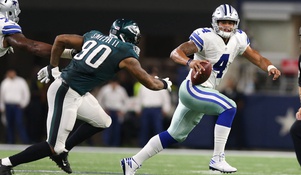How Relief Pitching Shaped the 2016 MLB Post Season
It all started with the completion of the 2015 World Series. The Kansas City Royals had just beat the New York Mets on the back of a dominant bullpen headline by Greg Holland, Wade Davis, Kelvin Herrera, Ryan Madson, and Franklin Morales. Other teams around the league began shuffling to try to build a bullpen to allow them to shorten games for the starters. Most notably, the New York Yankees acquired Aroldis Chapman from the Cincinnati Reds for several prospects, adding him to a bullpen that already wielded Andrew Miller and Dellin Betances, two of the best relief pitchers in baseball in 2015. The idea was that a three-headed monster at the end of the bullpen would allow them to control every game past the 6th inning, and the trio would carry an aging team into the post season.
Fast forward to the trade deadline in 2016. While many of the top contending teams were starting to separate themselves from the field, many still thought they needed an extra boost to make them true World Series contenders. Other teams, such as the relief heavy Yankees, were in the midst of a disappointing season and were ready to sell. Once the Chicago Cubs made the move for Chapman, the dominoes began to fall. What followed was a Cleveland Indians trade for Andrew Miller and a Washington Nationals trade for Mark Melancon.

Fast forward to the post season. The Cubs, Indians, and Nationals had all won their divisions, and were considered three heavyweight contenders for the World Series. The Indians unleashed newly acquired Andrew Miller in the Divisional Round, having him pitch 2 innings at a time to bridge the game from the middle innings to the 9th. He was completely dominant, as were the Indians in moving to the Championship Series. Interestingly, the Los Angeles Dodgers also used closer Kenley Jansen in an extended role in order to battle through to the Championship Series to face the Cubs. The roles remained similar in the Championship series, with Miller going as many as 2.2 innings, while the Dodgers continued to stretch Jansen and the Cubs later joining in and pushing Chapman more than his preferred 1 inning.
The World Series between the Cubs and the Indians truly became a battle of the bullpens. In a 7 game series, the starting pitchers managed 6 complete innings only 3 times in 14 opportunities. The culmination of this was game 7, when Cubs manager Joe Maddon made the decision to pull starter Kyle Hendricks, who won the National League ERA title in the regular season, after just 63 pitches in a game he led 4-1 at the time. Miller and Chapman finally broke down during the game and showed they were indeed human, and it was left to the rest of the bullpen for each team to finish it off. In the end, the Cubs came out on top to win their first World Series since 1908. All told, Chapman finished the post season with 13 appearances and 15.2 innings, and Miller finished with 10 appearances and 19.1 innings.
This post season raises the question, are late innings relievers going to be what championship caliber teams are built around moving forward? Are these late innings relievers going to continue to throw 2+ innings during the regular season in must win games? Perhaps there will be more to learn this coming off season. Chapman is a free agent and is figured to earn a contract in the range of $14-16 million per year. There will be a number of teams who believe they can contend in 2017 lined up to make offers in the hopes that he will be the tipping point for their team next season, just as he was for the Cubs in 2016.
Stay tuned for the latest sports stories. Be sure to check out our social media @beyondthemetrics on Facebook and Instagram, and @byondthemetrics on twitter.


